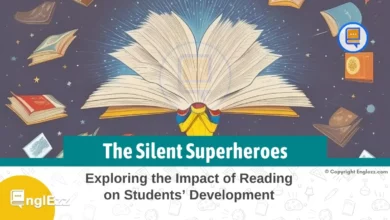In the symphony of language, every sound carries a unique melody, a distinct note that shapes our words and communicates our thoughts. Welcome to the fascinating world of phonetics and phonology, where the nuances of pronunciation dance delicately on the tongue, painting vibrant strokes in the canvas of communication. But wait – before you dismiss these terms as mere linguistic jargon, let’s embark on a journey that unravels their mysteries and illuminates their significance in mastering the eloquence of speech.
Table of Contents
- Demystifying the Basics: Phonetics and Phonology in Language Learning
- Exploring Vowels, Consonants, and Suprasegmental Features
- Unraveling the Mysteries of Pronunciation: Overcoming Common Obstacles
- Practical Tips for Improving Pronunciation
- Resources for Further Study of Phonetics and Phonology
- Final Thoughts
Demystifying the Basics: Phonetics and Phonology in Language Learning
At its core, phonetics unveils the secret behind individual sounds – those building blocks that construct words like meticulous architects crafting an intricate design. It delves into the mechanics of articulation and acoustics, revealing how each vowel or consonant emerges from our vocal cords or lips to create a symphony of speech. On the other hand, nestled within phonology lies a deeper layer of complexity; here, we explore not just single notes but entire melodies – how sounds intertwine to form patterns that define languages and convey meaning beyond mere words.

Imagine your voice becomes a brush painting vivid landscapes with every word uttered, each syllable shaping hills and valleys in conversation. Herein lies the crux – accurate pronunciation is not merely about mimicking sounds but about capturing their essence, infusing life into language through subtle intonations and rhythms. Join me as we unravel these intricacies together – because beyond mastering grammar lies an artistry waiting to be explored within phonetics and phonology’s embrace.
Exploring Vowels, Consonants, and Suprasegmental Features
Let’s dive into the dynamic world of phonetics where vowels and consonants play distinct roles in shaping the sounds of languages. Vowels are like the building blocks of sound production – they flow freely, with minimal obstruction from our vocal apparatus. Think of them as the melodious hum that gives words their soulful core. On the other hand, consonants add texture and definition to this symphony; they are the crisp edges that give shape and character to our speech. Understanding this interplay between vowels and consonants is key to mastering pronunciation; it’s about finding harmony in blending these contrasting elements seamlessly.
Beyond just individual sounds lies a realm of suprasegmental features that elevate spoken language to artistry. Stress, intonation, and rhythm wield immense power in communication by conveying emotion, emphasis, and cadence. They shape not only how we say words but also how we express ourselves – infusing conversations with shades of meaning beyond literal definitions. Picture stress as spotlighting certain words for emphasis or importance; intonation as painting emotions through rising or falling pitch contours; rhythm as orchestrating a musical flow that captivates listeners’ ears. When learners grasp these nuances of suprasegmentals alongside vowels and consonants, they unlock a richer tapestry of linguistic expression awaiting exploration.
Unraveling the Mysteries of Pronunciation: Overcoming Common Obstacles
Embarking on a journey to master a new language is an exhilarating adventure, but along the winding path of pronunciation, many travelers encounter stumbling blocks that test their resolve. One of these hurdles often springs from the intricate dance of sounds that differ between languages, causing confusion and frustration for non-native speakers. The notorious culprits? Those elusive phonemes that seem to slip through our grasp like quicksilver, leaving us tongue-tied in their wake.
Take, for instance, the perplexing distinction between th sounds in English—a challenge frequently faced by learners whose mother tongues lack this nuanced differentiation. The interplay between the voiced th as in ‘this’ and its voiceless counterpart as in ‘thin’ requires careful articulation and attentive ear training. Yet fear not, for beneath this seemingly daunting task lies a key strategy: deliberate practice coupled with patient perseverance. By honing in on the subtle differences through focused repetition and feedback loops, one can gradually unravel this enigmatic knot of phonetic intrigue.
Moving beyond individual letters to rhythmic patterns presents another fascinating puzzle for language enthusiasts seeking fluency. The cadence and stress placed upon syllables within words can often confound those unfamiliar with the dynamic melody hidden within speech patterns. Consider the melodic contours present in Spanish or Italian compared to the more staccato rhythm found in German—each culture’s linguistic music carries its own unique tempo and timbre.
To navigate these divergent musical landscapes successfully requires not only keen observation but active participation; mimicry combined with self-awareness forms a potent duo capable of unlocking these rhythmic mysteries, transforming stumbling blocks into stepping stones towards eloquent expression.
Practical Tips for Improving Pronunciation
Embarking on the journey to refine your pronunciation skills can be both rewarding and challenging. To enhance your articulation practice, consider incorporating tongue twisters into your daily routine. These playful phrases not only add an element of fun to your language learning process but also target specific sounds that may prove tricky for non-native speakers. By repeatedly tackling these intricate sequences of words, you actively engage the muscles in your mouth and train them to produce nuanced phonetic sounds more accurately.

Another valuable tool in the arsenal of pronunciation improvement is the use of minimal pairs. These pairs consist of two words that differ by only one sound, such as ship and sheep. By closely comparing and contrasting these subtle distinctions, learners can sharpen their ear for phonetic nuances and gradually refine their ability to replicate these distinct sounds themselves.
Practicing with minimal pairs not only hones your auditory discrimination skills but also heightens your awareness of the intricacies within the language’s sound system, paving the way for clearer enunciation with each repetition. Just as a sculptor refines a masterpiece through meticulous attention to detail, so too can you carve out precise pronunciations through deliberate engagement with such exercises.
Resources for Further Study of Phonetics and Phonology
When it comes to mastering pronunciation skills in language learning, continuous practice and exposure to various resources are key. While understanding the theory behind phonetics and phonology is essential, practical application through consistent practice is equally important. One valuable resource for further study is online platforms that offer interactive pronunciation exercises tailored to different proficiency levels.
These tools often provide instant feedback on your articulation, helping you pinpoint areas for improvement and track your progress over time. By incorporating such resources into your daily routine, you can engage in targeted practice sessions that focus on specific sounds or word patterns, ultimately enhancing your overall pronunciation accuracy.
In addition to online tools, seeking out authentic listening materials can greatly benefit your pronunciation development. Immersing yourself in native speaker content such as podcasts, TV shows, or audiobooks allows you to emulate natural intonation patterns and speech rhythms. Paying attention to how words are pronounced in context not only aids comprehension but also trains your ear to recognize subtleties of sound production.
Moreover, practicing shadowing – the technique of repeating sentences immediately after hearing them – can help bridge the gap between passive listening and active speaking skills. By mimicking native speakers’ phrasing and stress patterns, you can refine your own pronunciation habits and internalize linguistic nuances more effectively.
Final Thoughts
Understanding the fundamentals of phonetics and phonology is crucial for language learners seeking to refine their pronunciation skills. By grasping how sounds are produced and organized in a language, learners can overcome common challenges related to accent and intonation. Phonetics provides the tools to dissect individual sounds with precision, while phonology offers insights into how these sounds interact within a linguistic system.
Moreover, delving into phonetics and phonology opens up a world of possibilities for improving communication and fluency in a new language. It allows learners to move beyond mere imitation towards a deeper comprehension of sound patterns and structures. By honing their awareness of speech sounds through these disciplines, language enthusiasts can unlock the key to mastering authentic pronunciation that resonates with native speakers.
Remember, mastery of phonetics and phonology isn’t just about getting the sounds right – it’s about connecting on a deeper level with the rhythm and melody of a language’s unique vocal landscape.









Delve into the world of Phonetics and Phonology in Language Learning – unravel the complexities, refine your speech, and boost language proficiency. Unlock the secrets of Phonetics and Phonology in Language Learning! Demystify the basics with expert insights on sound structures and pronunciation.